Cataracts in dogs are a common eye condition that can lead to partial or complete blindness in dogs if left untreated. Similar to humans, a cataract involves the clouding of the lens, obstructing light from reaching the retina and thus impairing vision.
Understanding cataracts, their causes, symptoms, treatment options, and preventive measures is crucial for pet owners to ensure their dog’s visual health.
This article will cover the causes of cataracts in dogs, diagnostic methods, treatment options for cataracts and blindness in dogs, and potential outcomes for affected dogs.
What is Cataract in Dogs? How Can it Cause Blindness in Dogs?
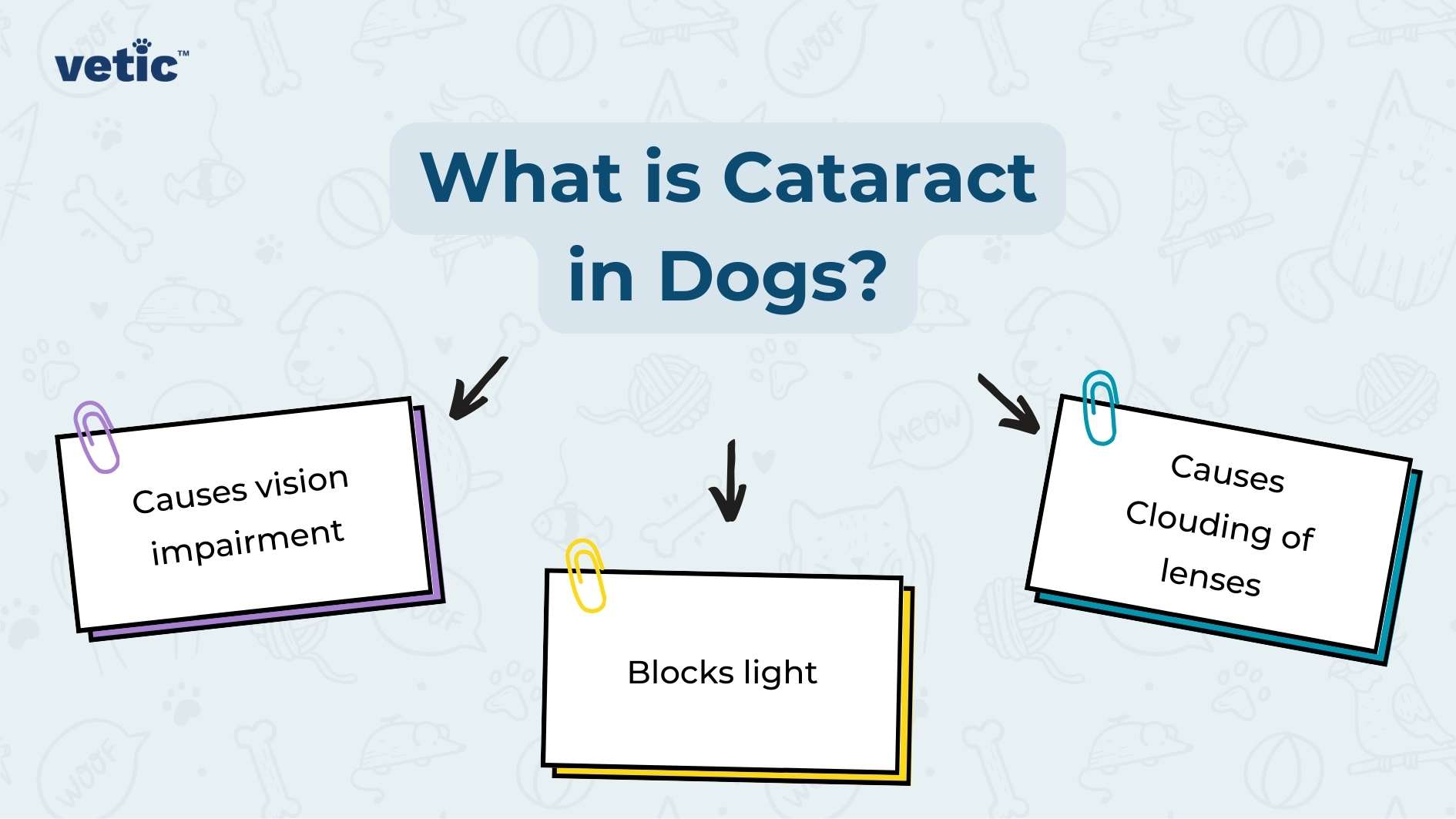
A cataract is an opacity or cloudiness that develops in the lens of the eye, which should normally be transparent.
In dogs, this cloudiness disrupts the passage of light to the retina, making it difficult for the eye to focus.
Over time, the cataract grows, obstructing vision and eventually leading to blindness. If untreated, cataracts can progress to cause total vision loss, especially if the lens completely loses transparency.
What Causes Cataract in Dogs Leading to Blindness?
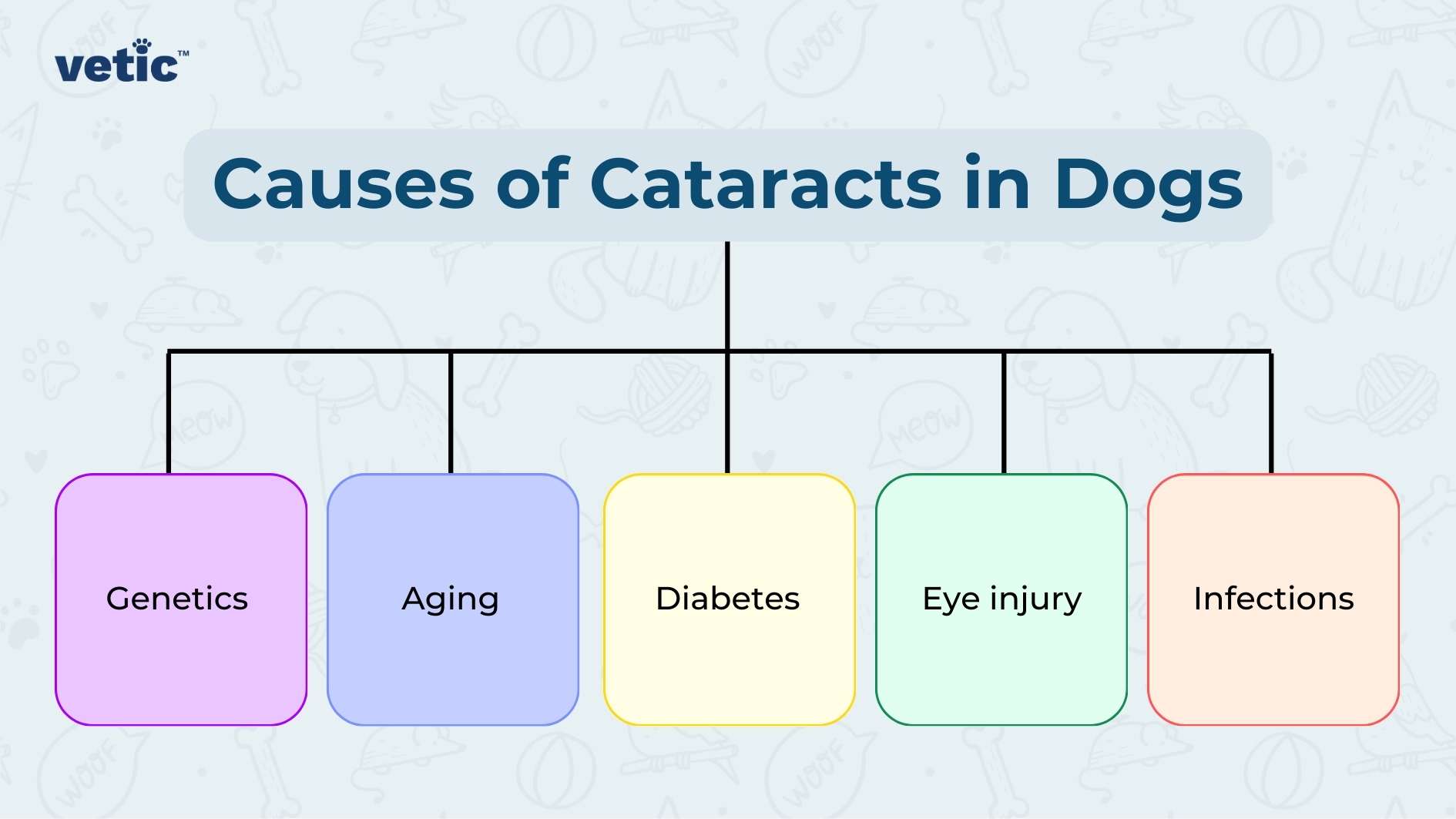
Cataracts in dogs can develop due to various reasons, including:
- Genetic predisposition: Some breeds are more prone to cataracts, such as Cocker Spaniels, Poodles, and Siberian Huskies.
- Ageing: Like humans, older dogs are more likely to develop cataracts as part of the natural ageing process.
- Diabetes mellitus: Diabetes in dogs is a significant risk factor, as high blood sugar levels can alter the lens’s structure, leading to cataract formation.
- Trauma or injury: Eye injuries may also cause cataracts to develop over time.
- Inflammation or infection: Chronic eye inflammation or infections such as uveitis can trigger cataract formation.
If My Dog is Blind, Does it Mean They Have Cataracts?
Not all cases of blindness in dogs are due to cataracts. Blindness can result from other issues such as retinal detachment, glaucoma, or optic nerve disorders.
Therefore, while cataracts are a common cause of blindness in dogs, a thorough veterinary examination is needed to determine the exact cause of the blindness.
Does Cataract in Dogs Always Lead to Blindness?
Cataracts do not always lead to complete blindness. In the early stages, cataracts may only partially impair a dog’s vision.
However, if left untreated, cataracts will typically progress and can eventually block enough light to cause total blindness. This progression may vary based on the dog’s age, overall health, and the underlying cause of the cataract.
Does My Dog Have Cataract: Signs of Cataract in Dogs
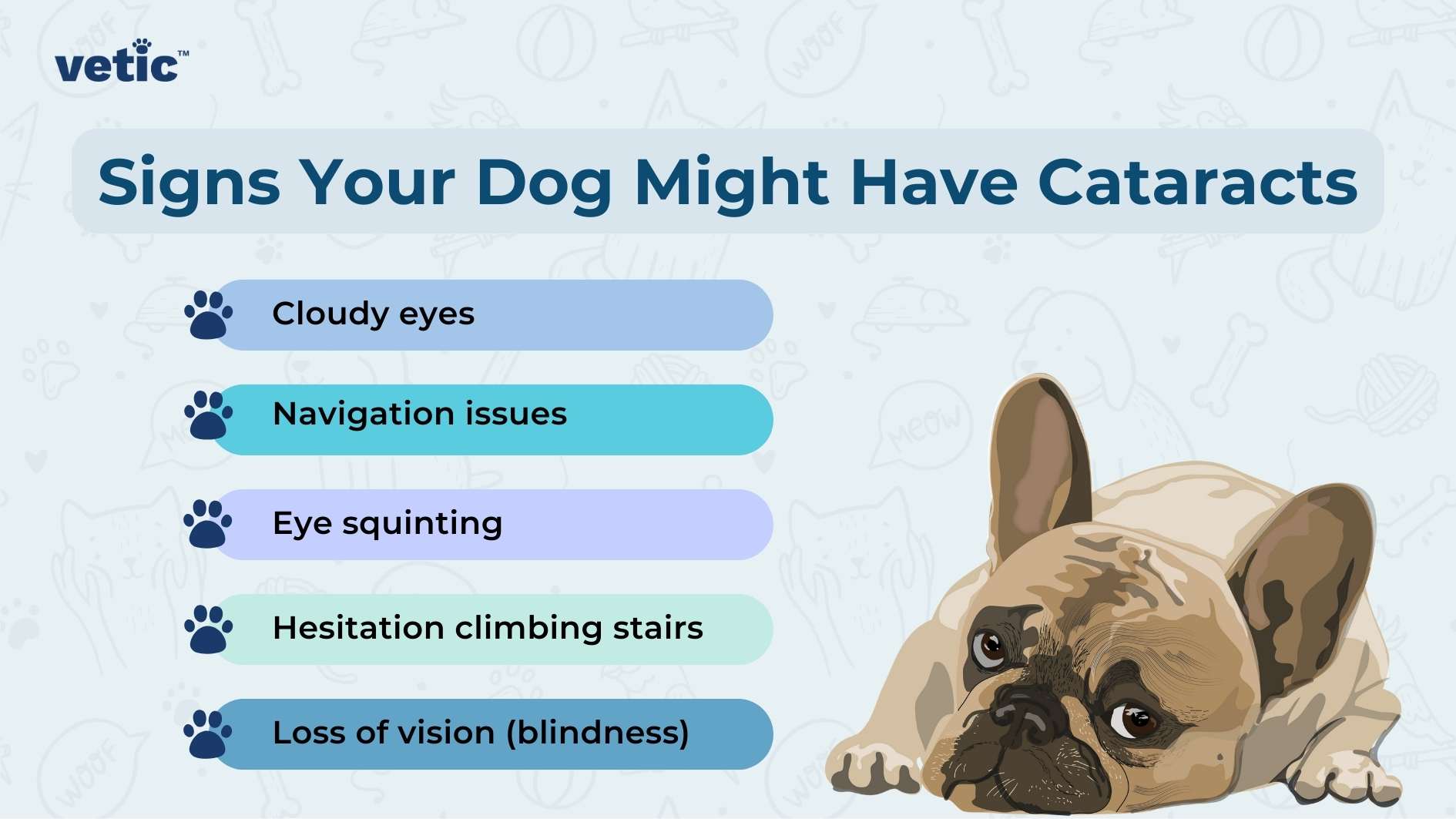
Common signs of cataracts in dogs include:
- Cloudy or bluish-grey appearance of the eyes: This is one of the most noticeable symptoms of cataracts.
- Difficulty navigating: If your dog seems to bump into furniture or is hesitant when walking, it could indicate impaired vision.
- Changes in eye behaviour: Increased squinting, tearing, or pawing at the eyes.
- Reluctance to jump or climb stairs: Dogs with cataracts may be cautious in environments where they need good depth perception.
What Can I Do if My Dog Has Cataracts?
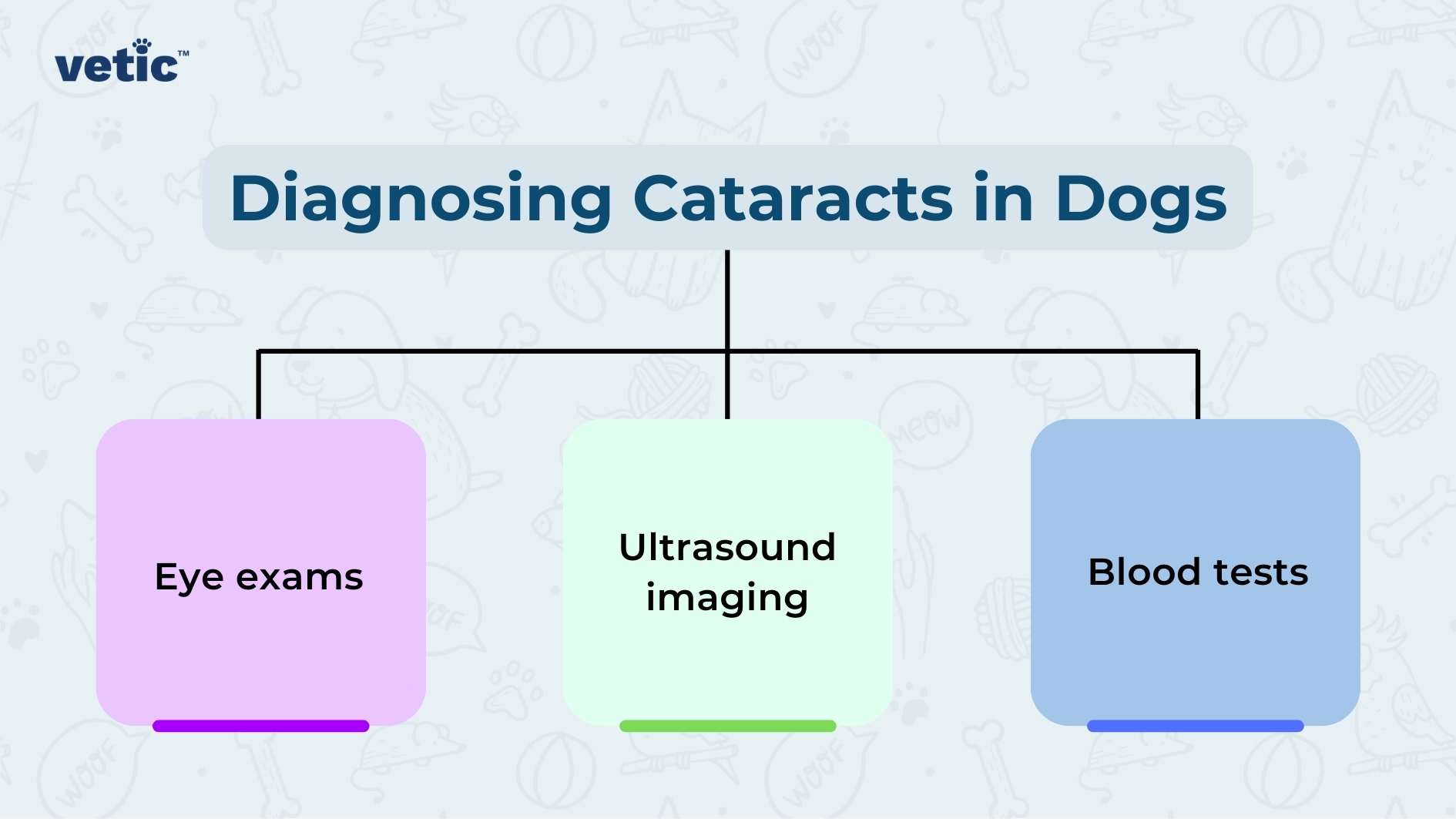
If you suspect your dog has cataracts, it’s important to take them to a veterinarian for a comprehensive eye examination. The vet will conduct a series of tests, including:
- Ophthalmic exam: This involves examining the lens and retina using specialised instruments.
- Ultrasound imaging: In cases where the cataract is advanced, ultrasound may be used to check the health of the retina behind the cloudy lens.
- Blood tests: Common blood tests may be performed to check for underlying conditions such as diabetes, which can contribute to cataract formation.
How is Cataract in Dogs Treated?
The primary treatment for cataracts is surgical removal of the cloudy lens, which is replaced with an artificial lens. There are no medications that can reverse cataracts.
If left untreated, cataracts can lead to complications like lens luxation (displacement) or glaucoma. Timely intervention, particularly surgery, can prevent blindness and restore vision in many cases.
Can Cataract in Dogs Be Operated Just Like Cataract in Humans?
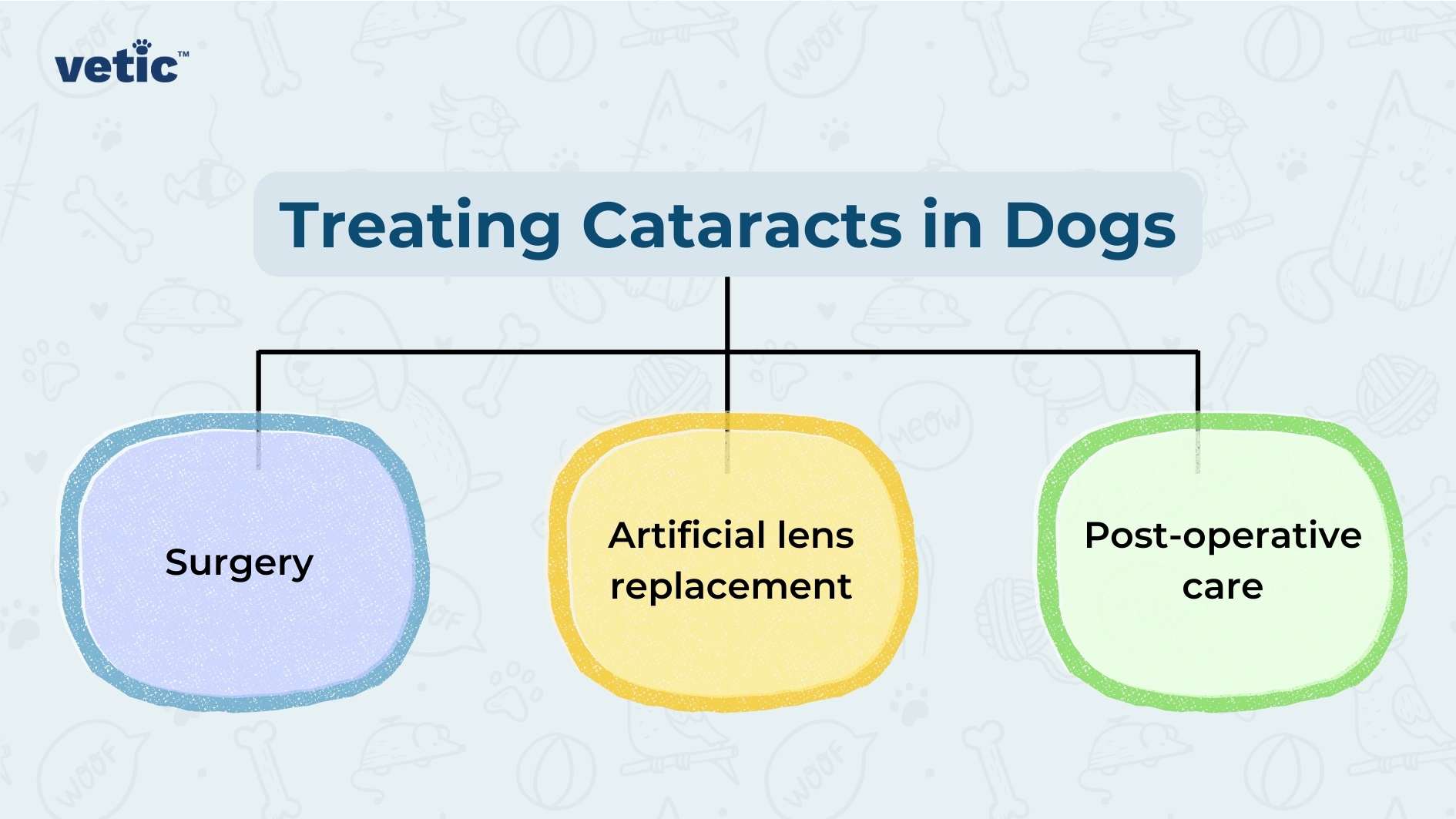
Yes, cataract surgery in dogs is similar to that in humans. The surgery involves the removal of the cloudy lens, and often, an artificial lens is inserted to help restore vision.
The procedure is performed under general anaesthesia by a veterinary ophthalmologist.
However, surgery for cataract in dogs is rare in India. Speak with your veterinary doctor to learn about the clinics and hospitals in your area that perform this surgery.
If My Dog is Blind from Cataract Development, Can Their Vision Be Restored?
If a dog is blind due to cataract formation, surgery can restore vision in most cases.
However, if the cataract is too advanced or has led to complications such as retinal detachment, the outcome may not be as favourable.
A veterinary ophthalmologist will evaluate whether surgery is a viable option based on the dog’s overall health and the condition of the retina.
Is it Possible to Prevent Cataracts in Dogs? How?
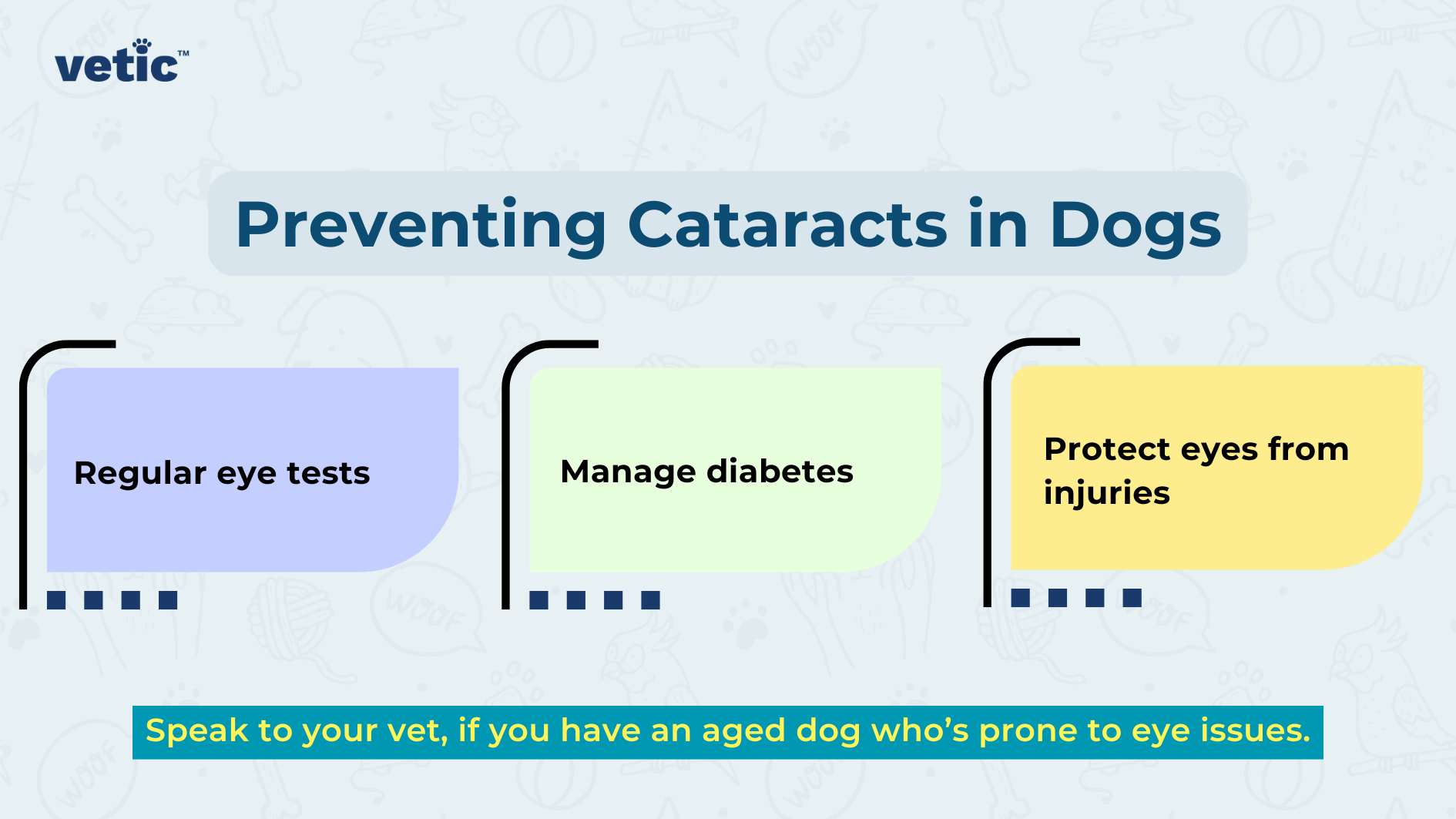
While some factors leading to cataracts, such as genetics and ageing, cannot be prevented, there are steps that can reduce the risk of cataracts:
- Control underlying conditions: Proper management of diabetes and regular veterinary check-ups can help delay cataract formation.
- Protect the eyes: Prevent eye injuries and infections, which can lead to cataracts.
- Nutrition: Feeding your dog a healthy, balanced diet with antioxidants may contribute to better eye health.
If My Dog Has Surgery for Cataracts, How Much Time Will it Take to Heal?
After cataract surgery, the recovery period usually lasts between 2 to 4 weeks. During this time, the dog may need to wear a protective collar to prevent rubbing the eyes.
Follow-up visits are necessary to monitor healing, and medicated eye drops are typically prescribed to reduce inflammation and prevent infection.
What Care Do I Need to Take if My Dog Has Cataracts?
If your dog has been diagnosed with cataracts, here are some steps you can take to support their vision and overall eye health:
- Regular vet visits: Ensure regular check-ups to monitor the progression of the cataract.
- Protect their eyes: Use protective eyewear or keep your dog in safe environments to avoid injury.
- Post-surgery care: Follow your veterinarian’s instructions carefully if your dog undergoes cataract surgery, including administering prescribed medications and attending follow-up appointments.
Cataract in Dogs and Blindness: Takeaway
Cataracts are a common eye condition in dogs that can lead to blindness if not treated. Early diagnosis, proper care, and timely surgical intervention can significantly improve the quality of life for dogs with cataracts. While some dogs may never experience full blindness from cataracts, others may benefit greatly from surgery. Preventive measures, such as managing underlying conditions and protecting the eyes from injury, can help reduce the risk of cataract development.
FAQs on Cataracts in Dogs and Blindness
What causes cataracts in dogs?
Cataracts in dogs can be caused by genetics, ageing, diabetes, eye injuries, or chronic eye inflammation.
Can cataracts in dogs be treated?
Yes, cataracts can be treated through surgery, where the cloudy lens is removed and replaced with an artificial one.
Are cataracts painful for dogs?
Cataracts themselves aren’t painful, but complications like glaucoma due to untreated cataracts can cause pain.
How can I tell if my dog has cataracts?
Look for cloudy eyes, difficulty navigating, and changes in behaviour, such as bumping into objects.
Is cataract surgery safe for dogs?
Cataract surgery in dogs is generally safe and has a high success rate when performed by a skilled ophthalmologist.
Can all dogs with cataracts undergo surgery?
Not all dogs are suitable candidates for surgery, especially if they have other eye conditions like retinal detachment.
Can cataracts in dogs be prevented?
While not entirely preventable, controlling underlying diseases like diabetes and preventing eye injuries can reduce the risk.
What breeds are most prone to cataracts?
Breeds like Cocker Spaniels, Poodles, and Siberian Huskies are more susceptible to cataracts.
